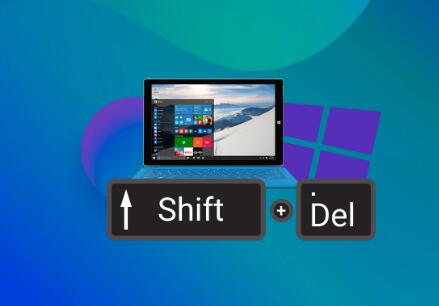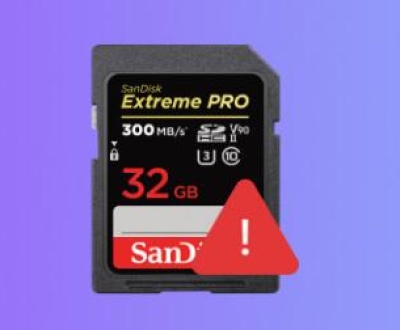Shift-deleting files, commonly known as permanent deletion, is a quick way to remove files from your computer. While this feature is convenient, it can sometimes lead to regret, especially if you accidentally delete something important. Unlike files moved to the Recycle Bin, which can be restored easily, Shift-deleted files bypass the Recycle Bin entirely, making them harder to retrieve. However, this doesn’t mean all hope is lost. In this guide, we’ll explore various methods to recover Shift-deleted files, including built-in Windows recovery tools, third-party software, and advanced data recovery techniques. Whether you’re dealing with a single file or an entire folder, there are ways to restore your data without paying expensive recovery fees.
1. Shift-Deleted Files
Before diving into the recovery methods, it’s essential to understand what happens when you press Shift + Delete. Normally, when you delete a file by pressing the “Delete” key, it gets moved to the Recycle Bin, which allows for easy recovery. However, when you press Shift + Delete, you’re telling your system to bypass the Recycle Bin and permanently delete the file. This doesn’t immediately erase the file from your hard drive; instead, it marks the space occupied by the file as available for new data. As a result, the file can still be recovered until that space is overwritten by new data.

The Nature of Data Deletion in Windows
Windows operating systems don’t actually remove the file data immediately upon deletion. Instead, they delete the file’s reference pointer in the file system, marking the space as free for other files. This is why data recovery is possible after Shift-deleting files. The more you use the disk after the deletion, however, the greater the chances that new data will overwrite the deleted file, making recovery more difficult or even impossible.
2. Method 1: Check the Recycle Bin
Why Shift-Deleted Files Are Sometimes in the Recycle Bin
While Shift-deleted files are meant to bypass the Recycle Bin, they can occasionally end up there if your settings are misconfigured or if Windows hasn’t properly executed the deletion process. In such cases, you may still be able to recover the file without needing additional tools.
Steps to Check the Recycle Bin
Open the Recycle Bin by double-clicking its icon on your desktop or navigating to it via File Explorer.
Look for the file or folder that you accidentally deleted.
Right-click on the file and select Restore. This will return the file to its original location.
If the file is not in the Recycle Bin, you’ll need to move on to other recovery methods.
3. Method 2: Use Windows File History
What Is File History?
Windows File History is a backup tool built into Windows 8 and later. It continuously backs up versions of your files and folders, allowing you to restore previous versions of them. If you have File History enabled, you can recover a file that was Shift-deleted, provided that the file was backed up before deletion.
Setting Up File History for Future Protection
To ensure future protection, make sure you enable File History:
Go to Settings > Update & Security > Backup.
Click Add a drive and select an external drive or network location to store your backups.
Choose More options to adjust the backup settings, such as how often backups are made.
Recovering Shift-Deleted Files Using File History
Navigate to the folder where the deleted file was located.
Right-click on the folder and select Restore previous versions.
In the window that opens, you’ll see a list of available backups. Select the version of the folder that contains the file you want to restore.
Click Restore to recover the file.
4. Method 3: Use Previous Versions in Windows
Understanding Previous Versions
Windows also has a feature called “Previous Versions” that automatically creates snapshots of files and folders. These versions can be accessed and restored to recover Shift-deleted files.
Accessing Previous Versions of Shift-Deleted Files
Right-click the folder that contained the deleted file.
Select Restore previous versions.
A list of available versions will appear. Select the version you want to restore and click Restore.
If no previous versions are available, you’ll need to move on to third-party tools.
5. Method 4: Use Data Recovery Software
Panda Assistant is a versatile and user-friendly software tool designed to assist users with data recovery, file management, and digital security. Whether you’ve accidentally deleted files, experienced data corruption, or are looking to retrieve lost documents, Panda Assistant offers a range of features that simplify these complex tasks, making it an essential tool for both individuals and businesses.
At its core, Panda Assistant specializes in recovering lost or deleted files from various storage devices, including hard drives, USB flash drives, SD cards, and memory cards. Using advanced scanning algorithms, it can locate and restore files that have been deleted through methods like Shift + Delete or emptied from the Recycle Bin. It also provides the option to recover lost or damaged partitions and repair corrupted files, ensuring minimal data loss.
6. Method 5: Try Command Prompt (Advanced)
Using Windows Command Prompt to Recover Shift-Deleted Files
Command Prompt is a powerful tool that can sometimes help recover Shift-deleted files, but it requires a bit of technical knowledge. You can use the chkdsk command to attempt recovery.
Steps to Execute Recovery via Command Prompt
Open Command Prompt as an administrator by typing “cmd” in the Start menu search bar, right-clicking on it, and selecting Run as administrator.
Type the following command and press Enter:
bash
chkdsk [drive letter]: /f
For example, if you want to recover from the C drive, type:
bash
chkdsk C: /f
This will check for file system errors and may restore lost files if the system has not yet overwritten them.
7. Method 6: Professional Data Recovery Services
When to Consider Professional Help
If you’re unable to recover Shift-deleted files using the methods above, or if the data is critical, professional data recovery services may be your best option. These services use specialized tools and techniques to recover data from damaged or corrupted drives.
What Happens in a Professional Data Recovery Lab
Technicians will assess the condition of your drive.
They will use specialized equipment to recover data, even from physically damaged drives.
Depending on the situation, this process can be expensive and time-consuming.
How Much Does Professional Recovery Cost?
The cost of professional recovery varies depending on the complexity of the situation and the type of drive. Generally, prices can range from $100 to several thousand dollars.
About us and this blog
Panda Assistant is built on the latest data recovery algorithms, ensuring that no file is too damaged, too lost, or too corrupted to be recovered.
Request a free quote
We believe that data recovery shouldn’t be a daunting task. That’s why we’ve designed Panda Assistant to be as easy to use as it is powerful. With a few clicks, you can initiate a scan, preview recoverable files, and restore your data all within a matter of minutes.
Subscribe to our newsletter!
More from our blog
See all postsRecent Posts
- How to retrieve corrupted sd card files? 2025-02-25
- How to retrieve onedrive deleted files? 2025-02-25
- Retrieve overwritten excel file 2025-02-25










